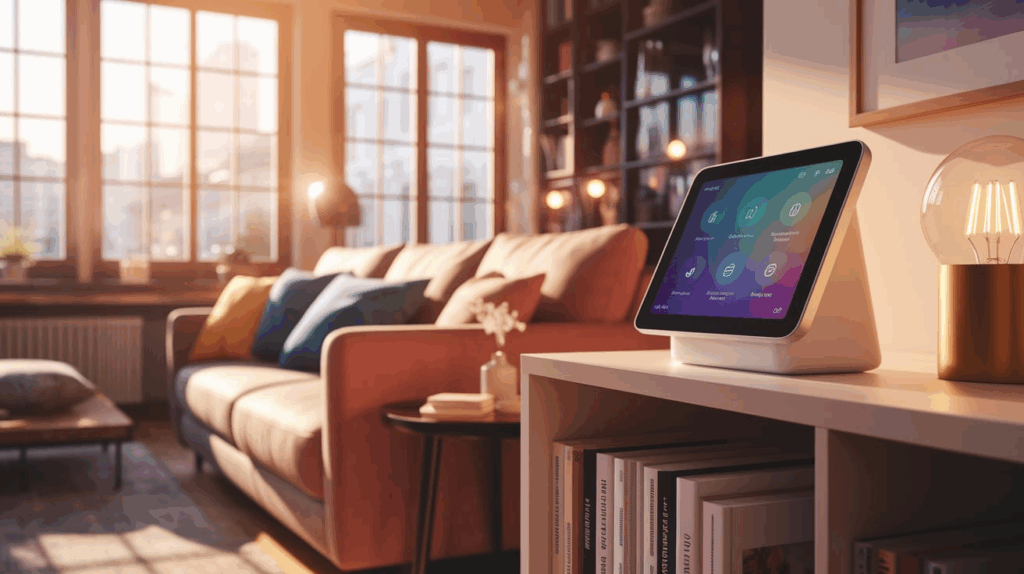Retirement should feel like freedom, not a daily obstacle course. Preparing your home with aging in mind can help ensure it stays a place of ease and independence. A few thoughtful upgrades like grab bars that blend into the décor, pull-out shelves that spare your back, and energy-efficient LEDs that cut trips to the ladder can keep you safe, comfortable, and independent for decades.
Safety First: Fall-Proofing the Home
Falls are the leading cause of injury among older adults, with over 14 million Americans aged 65+ experiencing one each year. Entryways, bathrooms, and staircases are the most common trouble spots, but thoughtful upgrades can make a big difference.
Start by identifying potential hazards and making a plan to address them room by room. Since many of these improvements can be costly, it’s worth exploring home renovation financing options or grants that help cover the cost of home safety modifications for seniors.
Start by identifying the areas in your home that need attention and create a step-by-step plan that fits your needs and home improvement budget.
Upgrades That Pay Off
- Secure flooring: Replace loose rugs or add non-slip pads.
- Brighten every step:Long-life LEDs cut risky bulb-changing trips up a ladder.
- Double up on handrails: Install sturdy rails on both sides of stairs and grab bars at thresholds.
- Add traction: Stick adhesive treads to tubs and outdoor steps.
- Clear the path: Remove cords, clutter, and unstable furniture from walkways.
Kitchen Modifications for Convenience
The kitchen is one of the most used and potentially hazardous spaces in any home. While cooking remains the top cause of home fires among older adults, many risks can be reduced with better design choices and accessibility upgrades.
- Induction cooktops that cool almost instantly help prevent burns and reduce the chance of a fire starting from a forgotten burner.
- Pull-out shelves and Lazy Susans bring pots forward, ensuring no bending or lifting heavy cookware from deep cabinets.
- D-shaped pulls and lever faucets are arthritis-friendly and easier to grip than knobs.
- Side-by-side fridges and wall ovens installed at waist height help prevent lifting heavy, hot dishes from awkward angles.
Bathroom Upgrades for Comfort and Safety

Replacing a tub with a curbless, tiled shower removes the tripping ledge, while textured porcelain or vinyl flooring keeps traction even when wet. Add a bench so you can bathe seated and a thermostatic mixing valve that caps water temperature to prevent scalds.
Supportive Fixtures and Everyday Ease
To further upgrade your bathroom, install grab bars that double as stylish towel rails next to the toilet and inside the shower; models anchored into studs support 250 lb or more. A comfort-height toilet (17-19 inches from floor to seat) reduces knee strain, and a handheld showerhead mounted on a sliding bar lets you rinse from a secure position.
Bright, motion-sensor LEDs around the vanity eliminate shadows and ensure late-night trips stay well lit, making it another simple step that helps avert costly injuries.
Accessibility Improvements Throughout the House

- Widen passageways: Expand busy doorways to at least 36 inches so wheelchairs and walkers glide through without bumping knuckles or hinges.
- Swap hardware: Replace round knobs with easy-push lever handles to help hands with reduced grip strength.
- Smooth every threshold: Add low-profile transition strips or rubber ramps at exterior doors so wheels and shuffling feet roll over without catching.
- Create a clear path: Install smooth, non-slip flooring in halls and keep furniture lined against the walls to preserve a 36-inch walking lane free of trip hazards.
Smart Tech and Mobility Aids
Innovation doesn’t stand still. A single-flight stairlift keeps every level usable without the cost of a full remodel, while ceiling-mounted tracks make bedroom-to-bath transfers safer for caregivers and spouses.
Energy Efficiency and Maintenance Reduction
Consider replacing old HVAC systems with energy-efficient models that minimize filter changes and system failures. In addition, double-pane windows and added insulation can help regulate indoor temperatures year-round, reducing the need to constantly adjust the thermostat.
Explore low-maintenance materials like composite decking, vinyl siding, or quartz countertops so you save money on repainting, sealing, and scrubbing. Installing a tankless water heater will require less maintenance over time. Such upgrades will simplify life now and also increase the home’s long-term resale value.
Financial Considerations and Planning Ahead
As you plan for retirement and invest in home upgrades to make life easier, it’s essential to keep your retirement savings and overall financial picture in mind. Smart home improvements should align with your budget and long-term goals to avoid unnecessary financial strain.
Prioritize upgrades that offer both comfort and potential value retention or enhancement, such as energy-efficient windows or accessibility features like ramps and walk-in showers. In addition, consider setting aside funds specifically for ongoing maintenance and unexpected repairs, as these costs can add up over time.
Consulting with a financial advisor can help you balance home improvement investments with your retirement savings plan, ensuring you maintain financial security while creating a comfortable and safe living environment for your golden years.
Final Thoughts
Preparing your home for retirement is all about creating a safe space that supports your independence and lifestyle for the years ahead. Try focusing on smart upgrades and energy efficiency, so your home provides you with greater peace of mind and less physical strain.

